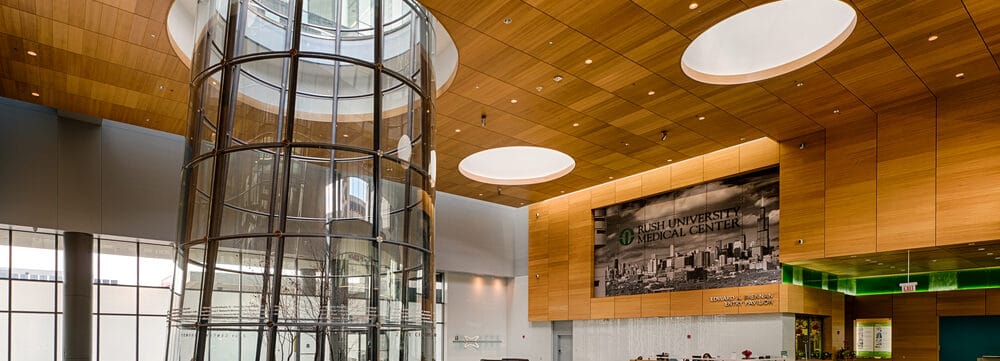Blog
5 Reasons Why Healthcare Design Matters

Each week we feature healthcare design projects that inspire, proven design techniques and new products that assist in the process. When it comes down to it, why does it matter? After all, when patients check into a facility, the design is most likely the last thing on their minds. That said, here are 6 reasons why healthcare design matters.
Shows Quality of Care and Installs Confidence
Bright lighting, well-utilized space, modern furniture, and decor can speak volumes to the patient’s perceived quality of care, the facility’s adequacy, and the competence of staff members. Beyond the mere look, the functionality of the design can also help a patient feel secure. When healthcare design fails, such as a noisy lobby or disorganized waiting room, patients can feel anxious. For more, see Lighting In An Intensive Care Unit Patient Room Plays A Role In Quality of Care, Safety, Sustainability, and Patient Comfort
Thoughtful Hospital Design Increases Patient Safety
Healthcare design increases patient safety in several ways. Some of the most obvious techniques are private patient rooms which stop the spread of infection, well-placed sinks, and handwashing stations to encourage adequate hand washing when entering a room, and thoughtfully laid paths from the patient’s bed to the bathroom. Techniques such as these and many more help increase a patient’s safety. For more, see Designing Hospitals with Security and Safety in Mind.
Wayfinding Techniques Help Patients and Visitors Find Where to Go
Hospitals are notorious for being hard to navigate. A healthcare designer can use wayfinding techniques to help patients and visitors find where to go. For more, see Wayfinding – Design Techniques that Keep Visitors from Getting Lost
Well-Designed Space Boosts Staff Productivity and Morale
Implementing certain design techniques can help boost staff productivity and morale. For example, ergonomic workspaces can reduce strain, while easy access to outdoor areas can help staff members enjoy their breaks. Decentralized nurses stations can prevent fatigue by reducing the number of steps nurses need to take during an already long (10 – 12 hour) shift. For more, visit: Win-Win: Incorporating Lean Design Can Slash Operating Costs and Improve Patient Safety, Family and Staff Satisfaction
Healthcare Design Influences Patient Healing
People are increasingly recognizing that hospital design affects patient healing. Some facilities feature large windows that let in natural light, a technique known as “Daylighting”. Others have gardens facing patient rooms, allowing bed-bound people to see nature even when they can’t go outside.
Another popular technique is Biophilic Design, where the use of natural materials like wood and stone within interior design is a priority. This technique is thought to reduce stress by bringing the outdoors in, making the surroundings seem warmer and more inviting. For more, visit: A Connection to Nature – The Hows and Whys of Biophilic Interior Design in the Healthcare Setting
Healthcare Design plays an important part in the patient experience and the perceived quality of care. Hospitals are places of health and restoration. Fostering an environment where patients and staff feel welcome and safe will facilitate the healing process.
Marie Wikoff is the creator of Wikoff Design Studio based out of Reno, Nevada. Her expertise in healthcare design has helped modernize healthcare organizations locally, regionally, and internationally, improving patient experience and outcomes. Her credentials include Evidence-Based Design Accreditation and Certification (EDAC), American Academy of Healthcare Interior Designer (CHID), the National Council of Interior Design Qualification (NCIDQ) and LEED AP. Contact Marie Wikoff
Source:
Kayla Matthews. “6 Reasons Hospital Design Matters More than We Often Consider.” Medium, Healthcare in America, 3 Dec. 2018, healthcareinamerica.us/6-reasons-hospital-design-matters-more-than-we-often-consider-472132b5bc05.







